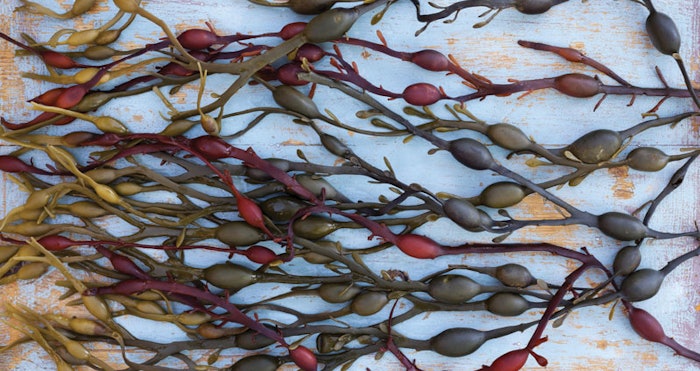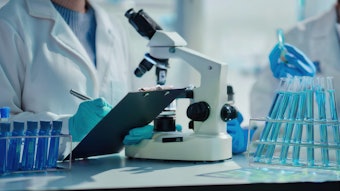
Fucus Vesticulosus Extract, Available in Several Bases
A seaweed, Bladderwrack, is an edible brown sea vegetable which grows in the Baltic regions of Europe, upper coastal regions of the United States and in the Atlantic. Although it is sometimes referred incorrectly to as a type of kelp, it grows alongside other seaweeds but is a species of its own. Its name comes from the sets of air-filled sacs or bladders which run along its center known as the thallus, and that helps keep it afloat in the ocean waters.
Because bladderwrack grows in the sea, it accumulates and concentrates various minerals and nutrients not readily found in earthbound plants. One of the most important elements found in bladderwrack is iodine. Products such as cosmetics and skin creams may include bladderwrack extract because of its effect on human skin. Many people have reported noticeable improvements to skin conditions such as eczema and acne after applying ointments containing bladderwrack. Some cosmetic companies even claim that regular use of bladderwrack extract can help tighten skin and reduce the appearance of wrinkles and fine lines.
Iodine, alginic acid and fucoidan are the three most active constituents of the plant. Along with those three, it also is rich in calcium, magnesium, potassium, sodium and iron. It is also high in some B-complex vitamins.
Disclaimer:
The above paid-for content was produced by and posted on behalf of the Sponsor. Content provided is generated solely by the Sponsor or its affiliates, and it is the Sponsor’s responsibility for the accuracy, completeness and validity of all information included. Global Cosmetic Industry takes steps to ensure that you will not confuse sponsored content with content produced by Global Cosmetic Industry and governed by its editorial policy.










